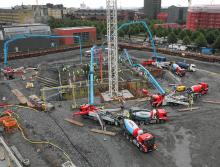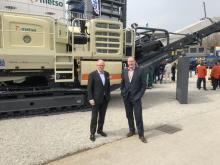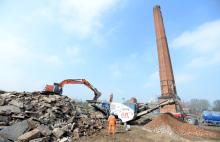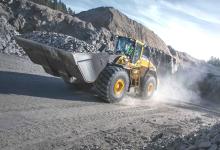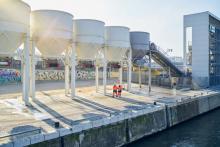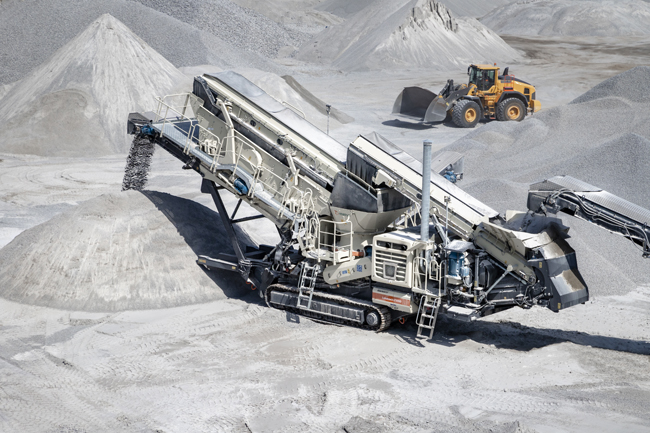
Environmental regulations are a major area of attention across all countries in the Nordic region. Liam McLoughlin reports.
Sustainability and recycling are common themes for the quarrying and aggregates markets in the Nordic countries of Sweden, Norway, Denmark, Finland and Iceland.
Recycling around the region started some years ago with asphalt and, with current technology, it is possible to recycle 100% of old asphalt.
The recycling of construction waste material around big cities will be the next big focus area, according to Juha Yli-Petäys, VP, Nordics market area, at Finland-based original equipment manufacturer (OEM)
In addition, as the availability of natural sand decreases, regulations relating to its use are getting stricter and demand is shifting to manufactured sand.
“Environmental legislation impacts all quarries and contractors in the Nordic countries,” says Yli-Petäys. “In Sweden and Norway, not only individual equipment but also whole crushing plants must have the CE marking [that shows they meet EU health, safety, and environmental protection standards]. Reducing emission levels, including dust and noise, is highly important – especially when working in urban areas. In Norway, demand for electric power/drive is increasing and impacted by legislation.”
From the equipment R&D point of view, the sustainability focus and increase in recycling means there is more emphasis on the development of technologies such as wet screening, wet handling, noise reduction and dust management – all essential elements in sustainable construction waste handling, especially in urban areas.
For example, to recycle the material efficiently it is necessary to be able to separate plastics and wood from concrete waste. Sustainability also means that companies must be able to recycle the used/worn equipment wear parts used in aggregates processing.
Sweden has been at the forefront of environmental efforts in manufacturing. A recent example of this is
The Swedish manufacturer says that authorities and the market are both raising climate and energy requirements for cement production, and to meet these demands production can be concentrated to more efficient plants. It has started the process for the possible decommissioning of Degerhamn, which is on the island of Öland and produces 300,000 tonnes of cement (10% of Cementa’s annual production).
Cementa, a subsidiary of German-based
Concentrating production to the other factories would mean a reduction in CO2 emissions of 260,000 tonnes per year.
There are some variations between the Nordic countries in terms of their aggregates production business models, according to Metso.
The most common model in Norway, Denmark and Iceland is for operators to have their own quarry and equipment, staffing it with their own personnel.
In Sweden and Finland it is currently most common for operators to have their own quarry and hire contractors who use their own equipment. However, among the bigger players in the two countries it is now increasingly common for quarry operators to have their own equipment, while still hiring contractors to do the work.
In terms of demand for aggregates, Metso says that there has been growth over the last two years in Sweden but, with the housing market having now slowed down and no major infrastructure plans in the pipeline, this may impact the demand for aggregates.
In Finland, aggregates demand is expected to stay on the same level as in 2018. The road repair budget will decrease and there are signs that housing construction may decrease. However, construction investments in growth centres are likely to continue.
In Denmark, the economy is stable and so is the demand for aggregates. In Norway, aggregates demand is increasing in road, bridge and tunnel projects, but decreasing in the construction of houses and offices.
Metso’s Yli-Petäys says the aggregates market in Iceland is growing thanks to the growth of tourism and the related need to build more hotels. Roads need to be repaired and new ones built to accommodate more traffic.
Aggregates demand in some Nordic countries is currently influenced by the levelling off in the infrastructure-building and housing markets. On the other hand, an increase in activity is anticipated in sectors such as industrial warehousing, mines and wind park projects.
There are no huge construction projects ongoing in Sweden or Finland, but in Norway there is the extension to Oslo airport and the railway system in addition to road projects in the south of the country. In April this year, the Norwegian government pledged to invest NOK120 billion (€12.31bn) in rail projects through to 2023.
In Sweden, Norway and Finland, the biggest aggregates demand is for road base material in grain sizes of 0/16, 0/32, 0/64, 0/150. In the production of concrete, material shape is a big focus.
One major infrastructure project that provides potential opportunities for companies in the Nordic countries is Rail Baltica, a passenger and freight railway linking Finland, Estonia, Latvia, Lithuania and Poland. Construction on the €6bn project, which is mainly funded by the EU, is planned to start in 2019 and be completed by 2026.
A major share of the aggregates for Rail Baltica will be delivered from Norway and Sweden, according to Paavo Syrjö, CEO of the Finnish construction industries confederation INFRA.
“If we look back a few years, we see that although the aggregates usage altogether [in Finland] is quite stable the share of aggregates crushed from residual blast stones has increased,” Syrjö says.
Two major railroad projects are scheduled to start shortly in southern Finland – the Helsinki-Turku and Helsinki-Tampere lines, which have a combined value of more than €7 billion. “If we are lucky we might see at least one of them to start during the next government period from 2019-2023,” says Syrjö. “The planning for Helsinki-Turku railroad is ongoing.”
He says that aggregates demand is likely to increase slightly in Finland this year compared to 2017 levels.
“We have been and still are quite busy building for urban roads in Finland,” he adds. “Building for highways and state railways as well as private houses is also predicted to show a slight increase
from 2017.”
In Denmark, there is a lot of focus on the recycling of asphalt and concrete, since almost all crushed stone needs to be imported.
In terms of the products that customers are asking for, Metso says there are differences between the markets. In Finland and Sweden, 90-95% of aggregates crushing plants that the company sells are track-mounted, the best-seller being the Lokotrack LT120 + LT330 combination.
The trend in Finland seems to be towards smaller equipment sizes, as the project sizes for the contractors are getting smaller.
“The project sizes may be as small as 20,000 tonnes per project, after which the equipment needs to be transferred to the next site,” says Yli-Petäys of Metso. “This may mean of up to 40 transfers/projects sites per year. To be able to do this, you need compact, easy-to-transfer mobile equipment. This type of plant is also in demand in Norway, due to the country’s challenging terrain.”
In Sweden, where operations concentrate on bigger quarries, there is more demand for large-capacity crushers. In 1990 there were 4,900 operating quarries/gravel pits, compared to just 1,300 in 2016. Annual operating production has increased to 70,000 tonnes from 20,000 tonnes. Jonsson & Söner, recently acquired by Metso, is a leading player in Sweden in large-capacity crushing plants and screens.
In Norway, electric-driven, efficient, easy-to-transfer mobile equipment is becoming more and more common. In Iceland, the demand focuses on compact, efficient mobile crushers, and an electric drive is considered a benefit thanks to the availability of low-cost electricity from heat and water. Large-capacity mobile screens are preferred in Denmark, and some customers also prefer electric equipment.

